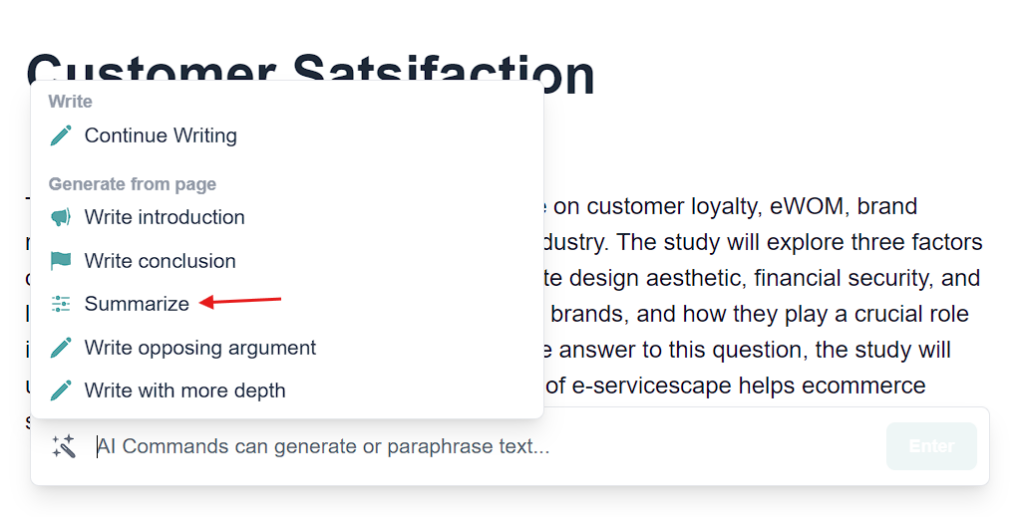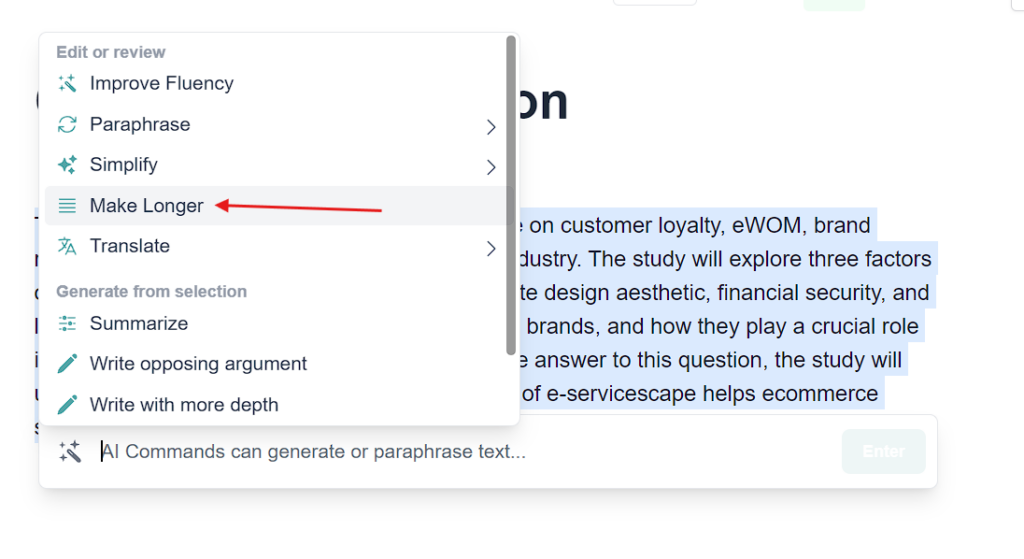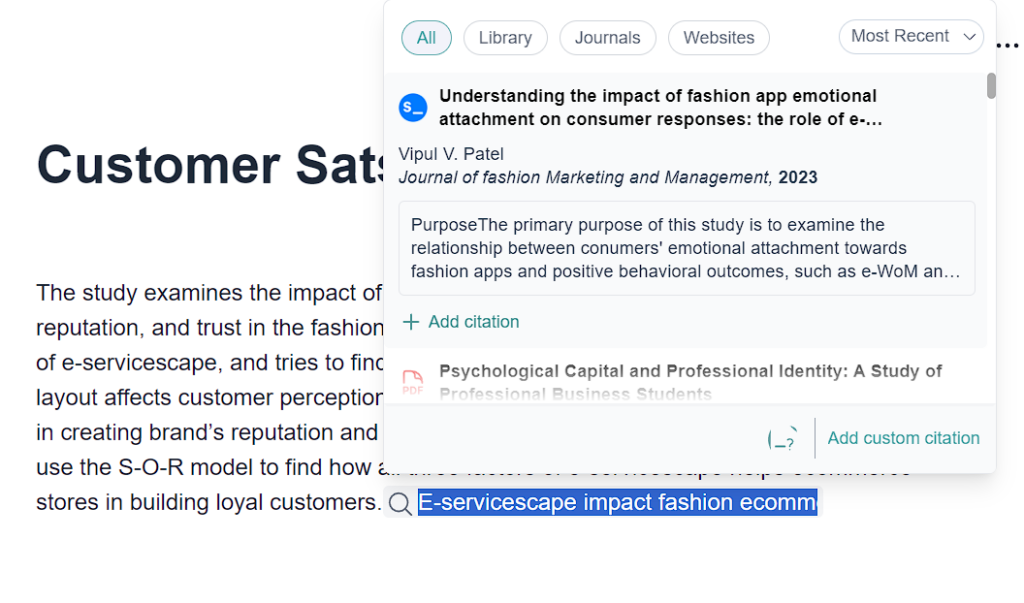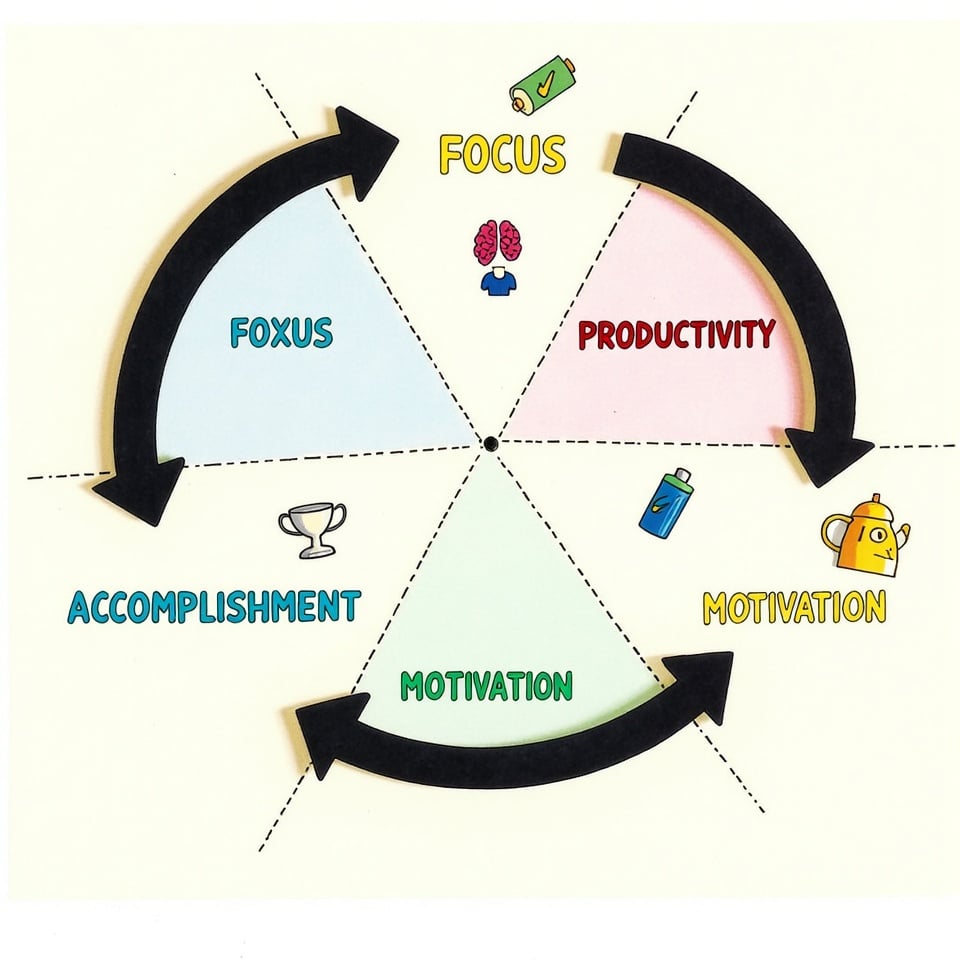This guide will help you master writing a literature review in record time.
The best part?
Everything here applies to literature review writing in 2024, including AI-assisted techniques.
(In other words: you’re getting the most up-to-date methods available.)
So, without further ado, let’s dive in.
Whether you’re a seasoned researcher or a student tackling your first research project, this guide will walk you through the entire process of crafting an effective literature review. We’ll cover everything from understanding the basics to leveraging modern tools like Blainy to streamline your work.
You’ll learn how to:
- Define your research question
- Conduct efficient literature searches
- Critically evaluate sources
- Organize and synthesize your findings
- Write a compelling review
By the end, you’ll have the skills to create outstanding literature reviews that contribute meaningfully to your field.
Table of Contents
Let’s get started!
What is a literature review?
A literature review is a comprehensive and critical analysis of existing research and scholarly works on a specific topic or research question. It serves as a foundation for new research by synthesizing and evaluating the current state of knowledge in a particular field.
In essence, a literature review:
- Surveys and summarizes relevant publications, including academic journal articles, books, and other scholarly sources.
- Identifies patterns, themes, and gaps in the existing research.
- Provides context for a research study by showing how it fits into the broader academic conversation.
- Demonstrates the researcher’s understanding of the topic and their ability to critically analyze and synthesize information.
- Helps to refine research questions and methodologies by building on previous work.
For students and researchers, a well-written literature review is crucial as it:
- Establishes the theoretical framework for their study
- Justifies the significance of their research
- Helps avoid unintentional duplication of existing studies
- Highlights areas where further research is needed
When writing a literature review, it’s important to not just summarize sources, but to critically engage with them, drawing connections between different works and identifying areas of consensus and disagreement among scholars.
What is the purpose of literature review?
The purpose of a literature review is multifaceted, serving several important functions in academic research and writing. Understanding these purposes can help researchers and students craft more effective and meaningful literature reviews.
- Contextualizing current research:
The primary purpose of a literature review is to situate new research within the existing body of knowledge. It demonstrates how the current study builds upon challenges, or fills gaps in previous work. This context helps readers understand the significance and relevance of the new research.
- Identifying gaps and research opportunities:
By thoroughly examining existing literature, researchers can identify areas that have been understudied or overlooked. This process often reveals gaps in current knowledge, providing justification for new research and helping to formulate research questions or hypotheses.
- Avoiding duplication:
A comprehensive literature review ensures that researchers aren’t unknowingly replicating existing studies. It helps in identifying what has already been done, allowing researchers to focus on novel aspects or approaches.
- Establishing theoretical and methodological foundations:
Literature reviews often reveal the theoretical frameworks and methodological approaches that have been used in a field. This information can guide researchers in selecting appropriate theories and methods for their own studies.
- Demonstrating expertise:
For students and early-career researchers, a well-crafted literature review demonstrates their familiarity with the field and their ability to critically engage with scholarly work. It showcases their understanding of key concepts, debates, and methodologies in their area of study.
- Synthesizing and critiquing existing knowledge:
Beyond mere summarization, a literature review involves analyzing and synthesizing information from various sources. This process can reveal trends, conflicts, and consistencies in the existing research, providing a more nuanced understanding of the topic.
- Informing methodology:
By examining the methods used in previous studies, researchers can make informed decisions about their own research design. They can learn from both the strengths and limitations of past methodologies.
- Supporting arguments and claims:
In academic writing, literature reviews provide evidence to support arguments and claims. They offer a foundation of scholarly work upon which new ideas and interpretations can be built.
- Facilitating interdisciplinary research:
For topics that span multiple disciplines, a literature review can help bridge different fields of study, showing how various perspectives contribute to understanding a complex issue.
- Tracking intellectual progress:
Over time, literature reviews in a field can demonstrate how knowledge and understanding have evolved, highlighting paradigm shifts and emerging trends.
Examples of literature reviews
Providing examples of literature reviews can be incredibly helpful for students and researchers to understand the structure, style, and depth expected in this type of academic writing. Let’s explore a few examples across different disciplines, highlighting their key features and strengths.
Example 1: Health sciences
Title: “The Impact of Social Media on Adolescent Mental Health: A Systematic Review”
This literature review might begin with an introduction that outlines the growing concern about social media use among adolescents and its potential effects on mental health.
The body of the review could be organized thematically:
- Positive impacts of social media on adolescent mental health
- Enhanced social connections
- Increased access to mental health resources and support
- Negative impacts of social media on adolescent mental health
- Cyberbullying and its psychological consequences
- Sleep disruption and its effects on mental well-being
- Body image issues and social comparison
- Moderating factors
- Age and developmental stage
- Gender differences
- Personality traits
The review would critically analyze studies in each area, comparing methodologies and findings. It might conclude by identifying gaps in current research and suggesting directions for future studies.
Example 2: Environmental science
Title: “Urban Green Spaces and Their Impact on Air Quality: A Review of Current Literature”
This review could start by explaining the importance of air quality in urban environments and the potential role of green spaces.
The main sections might include:
- Types of urban green spaces and their characteristics
- Mechanisms by which green spaces affect air quality
- Pollutant removal through deposition
- Alterations in air flow patterns
- Quantitative studies on air quality improvements
- Challenges in measuring the impact of green spaces on air quality
- Policy implications and urban planning considerations
Throughout the review, the author would critically evaluate the methodologies used in different studies, discuss conflicting findings, and highlight areas where more research is needed.
Example 3: Education
Title: “The Effectiveness of Gamification in Online Learning: A Comprehensive Review”
This literature review might begin with an overview of gamification and its increasing use in educational settings.
The main body could be structured as follows:
- Theoretical foundations of gamification in education
- Types of gamification elements used in online learning
- Points, badges, and leaderboards
- Narrative and role-playing elements
- Collaborative challenges
- Impact on student engagement and motivation
- Effects on learning outcomes across different subjects
- Challenges and limitations of gamification in online education
- Best practices for implementing gamification in online courses
The review would critically analyze the strength of evidence for gamification’s effectiveness, considering factors like study design, sample size, and context.
How to write a literature review?
Now that we understand what a literature review is. Let’s break down the process step-by-step.
The first crucial task in crafting your literature review is selecting an appropriate topic.
Choose a topic
Selecting an appropriate topic is the foundation of a good literature review. Here’s how to approach this step:
- Start with your area of interest or expertise
- Consider current trends and debates in your field
- Look for topics with sufficient existing research
- Ensure the topic is neither too broad nor too narrow
- Consider the potential for original contribution to the field
For example, if you’re in the field of psychology, you might choose a topic like “The impact of mindfulness meditation on stress reduction in college students.”
Define research question
Once you have a topic, formulate a clear and focused research question. This question will guide your literature review:
- Make it specific and answerable
- Ensure it’s relevant to your field of study
- Frame it to allow for critical analysis, not just description
Using our example topic, a research question might be: “How effective is mindfulness meditation in reducing stress levels among undergraduate students?”
A well-defined research question helps you:
- Focus your literature search
- Determine which sources are most relevant
- Structure your analysis and synthesis of the literature
- Identify gaps in existing research
Decide the scope of your research
Determining the scope helps manage the size and focus of your review:
- Set clear boundaries for what will and won’t be included
- Consider time frame (e.g., studies from the last 10 years)
- Decide on geographical limitations if relevant
- Choose which aspects of the topic to focus on
For our example, you might decide to focus on studies published in the last 5 years, looking at mindfulness interventions lasting at least 4 weeks, and including only studies with undergraduate participants.
Find databases for searches
Identifying appropriate databases is crucial for comprehensive coverage:
- Use academic databases relevant to your field (e.g., PsycINFO for psychology)
- Consider multidisciplinary databases like Google Scholar or Web of Science
- Include subject-specific databases (e.g., ERIC for education-related topics)
- Don’t forget about your institution’s library resources
For our mindfulness study, databases might include PsycINFO, PubMed, and CINAHL for health-related aspects.
Here’s a detailed guide on How to find Research Articles
Review existing literature
This is the core of your literature review:
- Start with a broad search using your key terms
- Refine your search as you go, using Boolean operators and filters
- Read abstracts first to determine relevance
- Take detailed notes as you read full texts
- Look for patterns, themes, and gaps in the literature
- Critically evaluate the methodologies and findings of each study
In our example, you’d look for studies on mindfulness meditation interventions for college students, noting their methods, sample sizes, duration, and outcomes related to stress reduction.
Write your literature review
Now it’s time to synthesize your findings:
- Start with an introduction that states your research question and objectives
- Organize your review either chronologically, thematically, or methodologically
- For each section, synthesize findings from multiple sources rather than summarizing individual studies
- Highlight agreements and contradictions in the literature
- Discuss the strengths and limitations of existing research
- Identify gaps or areas for further research
- Conclude by summarizing key findings and their implications for your research question
For our mindfulness example, you might organize sections by types of mindfulness interventions, their duration, or specific stress-related outcomes. You’d discuss overall trends in effectiveness, note any conflicting results, and point out areas needing further study (e.g., long-term effects or comparison with other stress-reduction techniques).
How to write a literature review faster with blainy?
Writing a literature review can be a time-consuming process, but with the help of Blainy, an AI research assistant, you can significantly streamline and accelerate your work. Here’s how to leverage Blainy’s features to write a literature review faster and more efficiently:
- Generate an essay outline
Utilize Blainy to quickly create a structured framework for your literature review:
- Craft a clear prompt including your research question and key topics.
- Input the prompt into Blainy.
- Review the generated outline, assessing its coverage and logical flow.
- Refine the prompt and regenerate if necessary.
- Customize the outline to fit your specific needs.
- Use the final outline as a guide for your research and writing process.
You can use blainy to create a preliminary draft. This feature can provide a basic structure and content based on your input. While this shouldn’t be used as a final product, it can serve as an excellent starting point, giving you ideas and a basic framework to build upon.
- Employ the AI Summarizer for Efficient Reading
When reviewing numerous research papers, use Blainy’s AI Summarizer to quickly grasp the main points of each study. This can help you process large amounts of information more rapidly, allowing you to focus on the most relevant aspects for your review.

- Expand ideas with sentence & paragraph expansion
For areas where you need more depth or detail, use the Sentence & Paragraph Expansion feature. This can help you elaborate on key concepts, methodologies, or findings from the literature, ensuring your review is comprehensive and well-developed.
Blainy can even help you with writing opposing arguments.

- Generate supporting paragraphs
Use the Paragraph Generator to create additional supporting content for your main points. This can be particularly useful when you need to provide more context or examples but are facing writer’s block.
- Refine your writing with the paraphrasing tool
As you integrate information from various sources, use Blainy’s Paraphrasing Tool to help avoid unintentional plagiarism and improve the flow of your writing. This tool can assist in rephrasing ideas from the literature in your own words while maintaining the original meaning.
- Craft a strong thesis statement
Write a prompt to blainy and ask it to help you in writing a strong thesis statement. Blainy AI will help you to create a clear and concise thesis for your literature review. This will help focus your review and provide a strong foundation for your argument or analysis.
- Fine-tune with essay expander
Once you have a solid draft, use the Essay Expander feature to enhance areas that may need more depth or clarity. This can help ensure your review meets length requirements and fully explores all necessary aspects of your topic.
- Add citations
You can add citations from million of sources using blainy with just one click.

- Final review and editing
After using these AI-assisted features, carefully review and edit your work. While Blainy can significantly speed up the process, your expertise and critical thinking are crucial for ensuring the final product is of high quality and meets academic standards.
Tips for effective use of blainy:
- Always start with a clear research question and scope to guide Blainy’s AI features effectively.
- Use Blainy’s outputs as a starting point, not a final product. Your expertise and critical analysis are essential.
- Regularly save your work and keep track of which parts were AI-generated for later review and refinement.
- Cross-reference Blainy’s outputs with your research notes and primary sources to ensure accuracy.
- Use Blainy to overcome writer’s block or to generate ideas, but always apply your own critical thinking.
By strategically using these features of Blainy, you can significantly reduce the time spent on the mechanical aspects of writing a literature review, allowing you to focus more on analysis, synthesis, and ensuring the overall quality and coherence of your work.
Remember, while AI can greatly assist in the process, your unique insights, critical evaluation, and academic judgment remain irreplaceable in creating a high-quality literature review.
Conclusion
Writing a literature review is a critical skill for researchers and students alike. It requires a systematic approach, from choosing a topic and defining research questions to synthesizing and analyzing existing literature. The process demands careful organization, critical thinking, and clear writing.
While traditional methods remain valuable, modern AI tools like Blainy can significantly streamline the process. These tools can assist with generating outlines, summarizing complex texts, expanding ideas, and even creating initial drafts. However, it’s crucial to remember that AI should complement, not replace, human expertise and critical analysis.
Ultimately, a well-crafted literature review serves as a foundation for further research, highlighting what’s known, what’s contested, and what remains to be explored in a given field. By mastering this skill and judiciously using available tools, researchers can contribute more effectively to their academic disciplines and push the boundaries of knowledge.
Frequently asked questions
What is a literature review in research?
A literature review is a comprehensive summary and critical analysis of existing research on a specific topic. It synthesizes findings from various sources, identifies trends, gaps, and contradictions in the literature, and provides context for new research. The purpose is to demonstrate a thorough understanding of the current state of knowledge in the field and to justify the need for further study.
How can I start writing a literature review?
To start writing a literature review:
- Define your research question or topic clearly
- Conduct a comprehensive search of relevant literature
- Read and take notes on key sources
- Organize your findings into themes or chronological order
- Begin with an introduction that outlines your topic and objectives
- Write the body of the review, synthesizing information from multiple sources
- Conclude by summarizing key findings and identifying areas for further research
What should I do before writing the literature review?
Before writing, you should:
- Clearly define your research question and scope
- Identify relevant databases and search terms
- Conduct a thorough literature search
- Read and critically evaluate sources
- Take detailed notes and organize your findings
- Create an outline or structure for your review
- Familiarize yourself with the citation style require
What are the 5 rules for writing a literature review?
While there aren’t universally agreed-upon “rules,” here are five key principles:
- Be comprehensive yet focused: Cover all relevant literature but stay within your defined scope
- Be critical and analytical: Don’t just summarize; evaluate and synthesize the information
- Use a clear structure: Organize your review logically, whether thematically, chronologically, or methodologically
- Show relationships between studies: Highlight connections, contradictions, and gaps in the literature
- Be objective: Present a balanced view of the literature, acknowledging different perspectives
How is a literature review different from an academic research paper?
Key differences include:
- A literature review synthesizes existing research, while a research paper presents original findings
- Literature reviews are typically organized by themes or concepts, while research papers follow a standard format (introduction, methods, results, discussion)
- Literature reviews focus on analyzing and synthesizing others’ work, while research papers emphasize the author’s own study and results
- Literature reviews cover a broad range of sources on a topic, while research papers focus on a specific research question or hypothesis
What are some strategies for writing a literature review?
Effective strategies include:
- Start with a clear research question to guide your review
- Use systematic search methods to find relevant sources
- Take detailed notes as you read, focusing on key themes and findings
- Organize your review around themes, methods, or chronology
- Use synthesis matrices to compare and contrast different studies
- Write critically, not just summarizing but analyzing the strengths and weaknesses of each study
- Use transitional phrases to show relationships between different studies or ideas
- Regularly refer back to your research question to maintain focus
What is the format of a literature review?
A typical format includes:
- Introduction: States the topic, research question, and objectives of the review
- Body: Organized into sections based on themes, methodologies, or chronology
- Each section synthesizes information from multiple sources
- Critically analyzes the strengths and weaknesses of studies
- Highlights agreements and contradictions in the literature
- Conclusion: Summarizes key findings, identifies gaps in current knowledge, and suggests directions for future research
- References: A comprehensive list of all sources cited in the review
What is the difference between annotated bibliography and literature review?
Key differences:
- Purpose: An annotated bibliography provides a brief summary and evaluation of individual sources, while a literature review synthesizes and analyzes multiple sources to identify patterns and gaps in the literature
- Structure: Annotated bibliographies list sources alphabetically with individual annotations, while literature reviews are organized thematically or chronologically with integrated discussion of multiple sources
- Depth of analysis: Annotated bibliographies typically offer brief critiques of individual sources, while literature reviews provide in-depth analysis and synthesis across sources
- Length: Annotated bibliographies are usually shorter, with brief entries for each source, while literature reviews are more extensive, offering a comprehensive overview of the field
- Integration of information: Literature reviews connect ideas across sources, while annotated bibliographies treat each source separately
Understanding these distinctions can help researchers choose the appropriate format for their needs and produce more effective academic writing.







